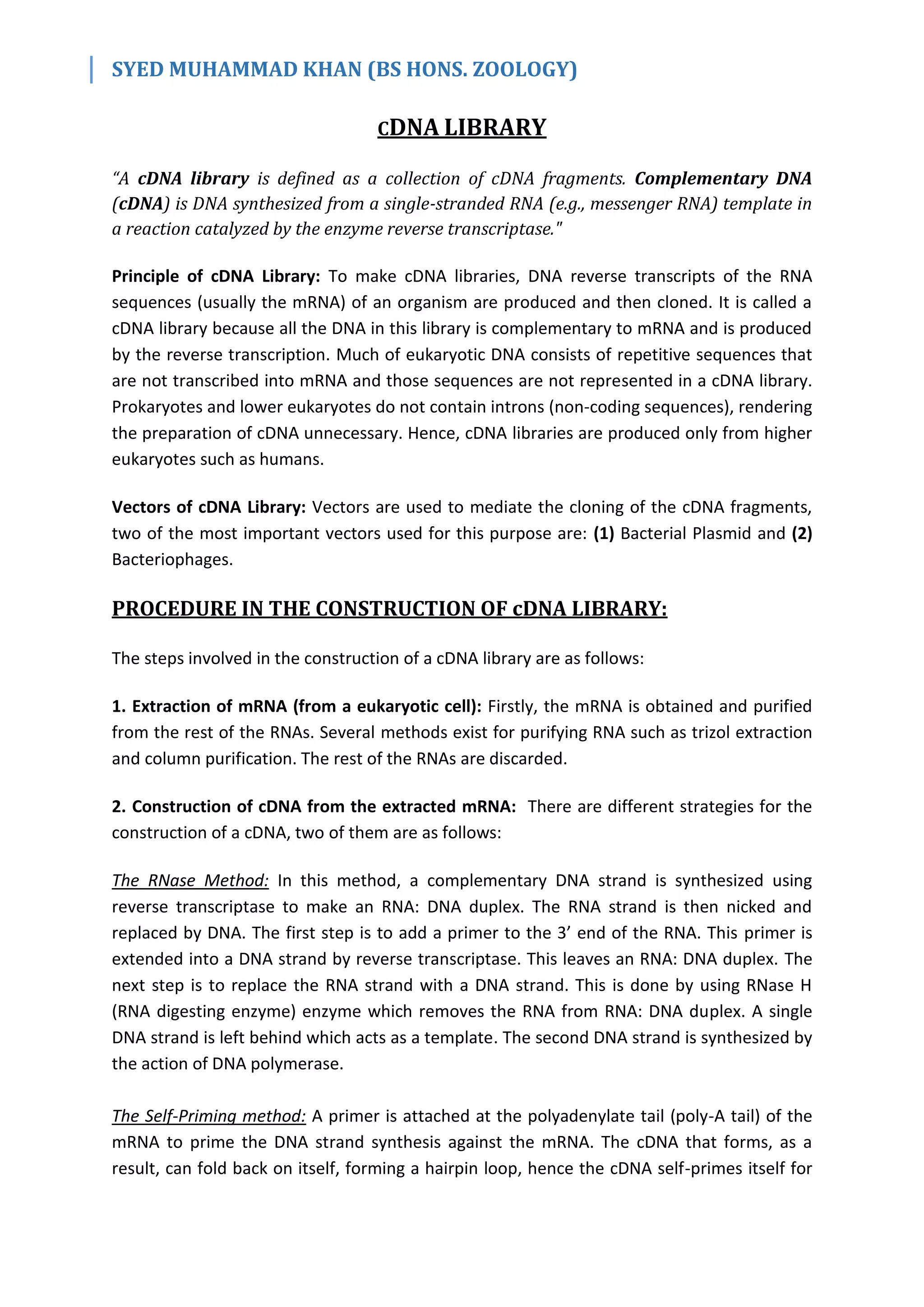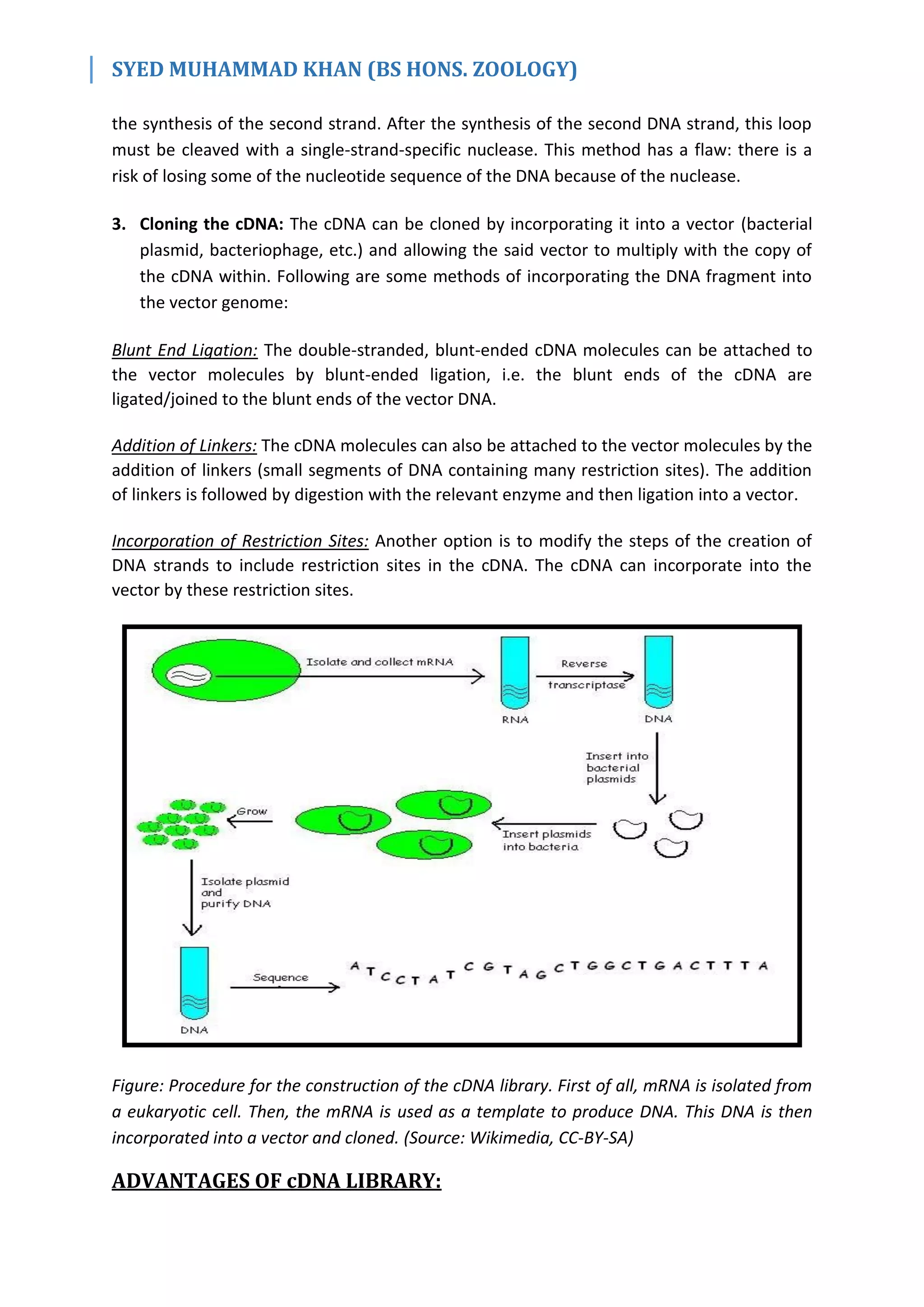A cDNA library is a collection of cDNA fragments synthesized from mRNA templates using reverse transcriptase, mainly derived from higher eukaryotes. The library construction involves mRNA extraction, cDNA synthesis, and cloning into vectors, with advantages such as enrichment in actively transcribed genes, but limitations including exclusion of introns and non-transcribed sequences. Applications include gene discovery, cloning for gene function studies, and analysis of mRNA expression across different cells or tissues.


